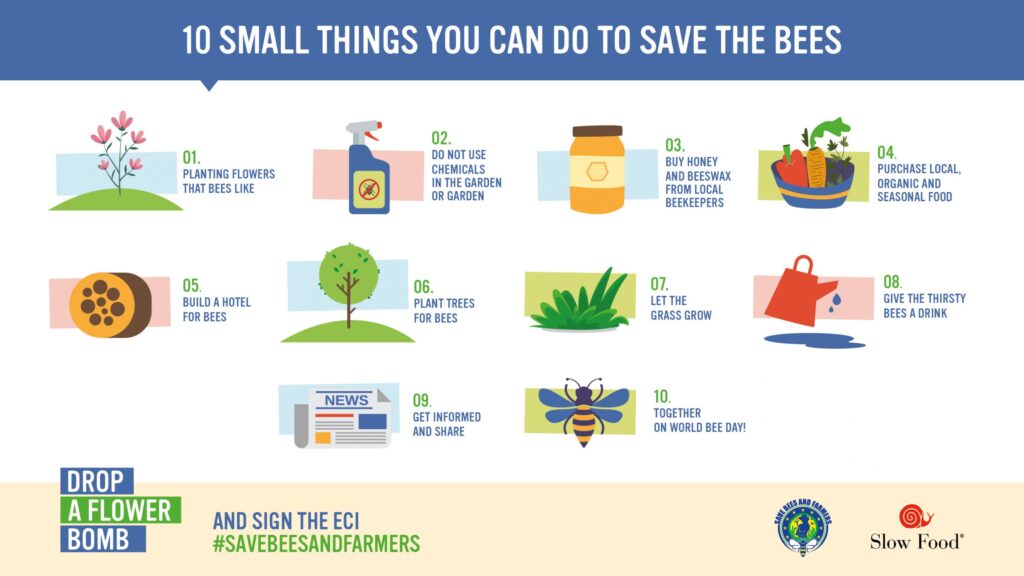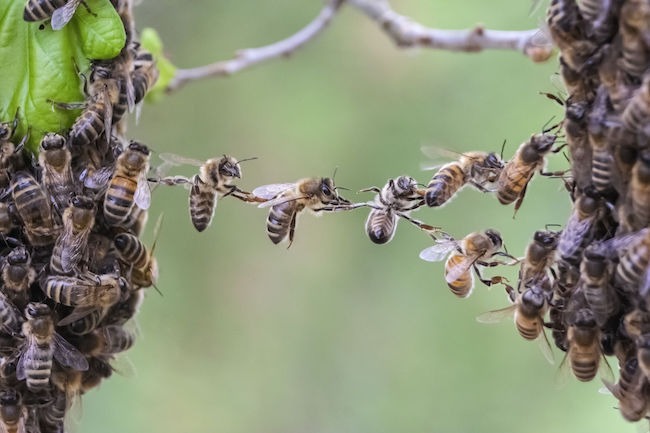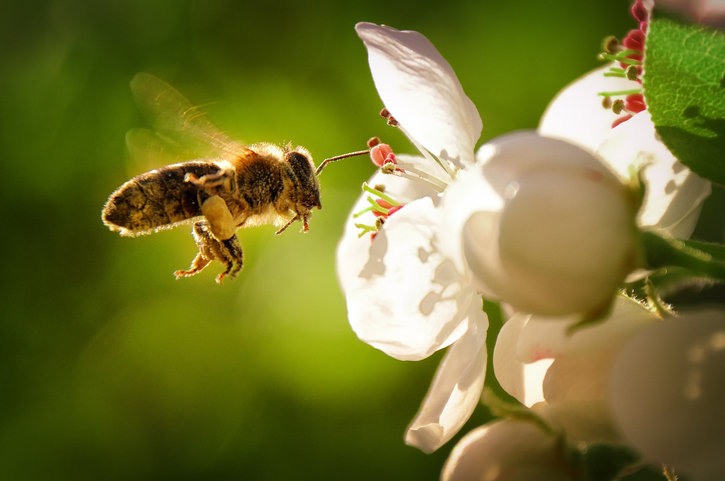
Are you looking to make a positive impact on your community and help protect the vital role that bees play in our environment? If so, you’ve come to the right place! In this article, we will explore various ways that you can lend a helping hand to these hardworking pollinators right in your own backyard. By implementing a few simple practices, you can create a bee-friendly haven that not only benefits the bees but also enhances the overall biodiversity and beauty of your community. So, let’s get started on this journey to support our buzzing friends and create a better world for them and ourselves!
Plant Bee-Friendly Flowers
Choose Native Plants
One of the most effective ways to support bees in your community is by planting native plants. Native plants are adapted to the local climate and provide bees with the nectar and pollen they need to survive. By choosing native plants, you create a habitat that is familiar to bees and other pollinators, making it easier for them to find and access food sources.
Plant a Variety of Flowers
To attract different species of bees, it is important to plant a variety of flowers. Bees have different preferences when it comes to the shape, color, and scent of flowers. By planting a diverse range of flowers, you ensure that there is something for every bee species in your community. Consider including flowers with different blooming periods as well, to provide a continuous food source throughout the seasons.
Provide a Continuous Bloom
Bees need a continuous supply of nectar and pollen to thrive. To support them, aim for a garden that blooms from early spring to late fall. This means choosing flowers that have staggered blooming periods and selecting plants with different flowering times. By providing a continuous bloom, you ensure that bees will have access to food throughout the growing season.
Avoid Chemical Pesticides
Chemical pesticides, such as insecticides and herbicides, can be harmful to bees and other pollinators. These chemicals can contaminate the nectar and pollen of flowers, resulting in bee poisoning. To create a bee-friendly environment, avoid using chemical pesticides in your garden. Instead, opt for natural pest control methods, such as insect-repelling plants, companion planting, and biological controls.
Create a Bee-Friendly Habitat
Provide Nesting Sites
Bees need suitable nesting sites to lay their eggs and raise their young. You can create bee-friendly nesting sites by leaving patches of bare ground or building artificial nesting structures, such as bee hotels. Many species of bees nest in the ground, so leaving some areas with bare soil can provide them with the habitat they need.
Leave Bare Ground
Some species of bees, like ground-nesting bees, require patches of bare ground to create their nests. By leaving areas with bare soil in your yard or garden, you provide these bees with a suitable habitat. Avoid covering all areas with mulch or dense vegetation, as it may restrict their nesting opportunities.
Build Bee Hotels
Bee hotels are man-made structures specifically designed to provide nesting sites for solitary bees. You can easily make your own bee hotel using materials like bamboo, wood blocks with pre-drilled holes, or hollow stems. Hang or place these structures in your garden to attract solitary bees and provide them with a safe place to lay their eggs.
Plant Trees and Shrubs
Trees and shrubs not only provide shade and beauty to your garden but also offer valuable habitat for bees. Many species of bees rely on trees and shrubs for nesting and foraging. Consider planting native flowering trees and shrubs, such as apple, cherry, and blackberry, to provide a diverse range of food sources and nesting opportunities for bees.
Install Water Sources
Bees need access to water for hydration, especially during hot and dry periods. Install a shallow water source in your garden, such as a bird bath or a shallow dish filled with water and rocks. Place some floating objects like twigs or cork pieces in the water to provide landing spots for bees. Make sure to regularly refill the water to ensure bees always have a reliable water source.

Support Local Beekeepers
Buy Local Honey
supporting local beekeepers is a great way to help bees and the local economy. Purchase honey from local beekeepers as it helps fund their beekeeping operations and promotes sustainable beekeeping practices. Additionally, local honey is often sourced from bees that have foraged on nearby plants, giving you the added benefit of enjoying a taste of your local environment.
Connect with Beekeeping Associations
By joining and connecting with local beekeeping associations, you can learn more about bees and beekeeping. These associations offer resources, workshops, and mentorship programs for aspiring beekeepers. By engaging with these groups, you can gain knowledge on how to support local bees, acquire beekeeping skills, and even consider starting your own beehive.
Donate to Beekeeping Initiatives
There are numerous beekeeping initiatives and organizations that work towards bee conservation and education. Consider donating to these initiatives, as your contributions can help fund research, hive management, and educational programs. Supporting these initiatives helps promote the well-being of bees and contributes to building a more sustainable ecosystem for them.
Host Educational Events
Hosting educational events in your community is a wonderful way to raise awareness about the importance of bees. You can organize workshops, seminars, or even beehive tours to educate people about the role bees play in pollination and the environment. These events can inspire others to take action and create their own bee-friendly habitats.
Spread Awareness about Bees
Organize Bee-Focused Events
Take the initiative to organize events that focus on bees and their conservation. Consider hosting events such as bee festivals, plant sales with bee-friendly plants, or honey tastings. These events can bring the community together, educate people about bees, and encourage them to take steps to protect their local bee populations.
Educate Others
One of the most powerful ways to help bees is by educating others about their importance and the challenges they face. Share your knowledge about bees with friends, family, and neighbors. Discuss the vital role they play in food production and the ways in which individuals can make a difference in supporting bees through small lifestyle changes.
Use Social Media Platforms
Utilize social media platforms to spread awareness about bees and their conservation. Share informative posts, visuals, and articles highlighting the importance of bees and practical steps individuals can take to create bee-friendly environments. Encourage others to share the information and engage in conversations about bees, further amplifying the message.
Collaborate with Schools and Community Groups
Engage with local schools and community groups to collaborate on bee-related projects and educational initiatives. Offer to conduct workshops or presentations about bees, their importance, and how to create bee-friendly habitats. By involving schools and community groups, you can reach a larger audience and foster a sense of collective responsibility towards bees.

Reduce or Eliminate Pesticide Use
Choose Organic Pest Control Methods
Opt for organic pest control methods in your garden to minimize the risks to bees and other beneficial insects. There are numerous organic alternatives available, such as insect-repelling plants, companion planting, and biological controls like ladybugs or nematodes. These methods help control pests without harming bees and contribute to a more balanced ecosystem.
Implement Integrated Pest Management
Integrated Pest Management (IPM) is a holistic approach to pest control that focuses on using a combination of strategies to manage pests effectively. By implementing IPM, you can reduce the reliance on chemical pesticides, making your garden safer for bees. Monitor pest populations, identify the source of the problem, and implement targeted, least-toxic solutions.
Be Mindful of Lawn Treatments
If you have a lawn, be cautious of the treatments and chemicals used to maintain it. Many conventional lawn care products contain chemicals that are harmful to bees. Opt for organic fertilizers and natural pest control methods to create a bee-friendly lawn. Consider allowing clover and other wildflowers to grow in your lawn, providing additional food sources for bees.
Avoid Neonicotinoid Pesticides
Neonicotinoid pesticides are a class of insecticides that have been linked to bee decline. These chemicals can be persistent and systemic, meaning they are absorbed by the plant and can end up in the nectar and pollen. Avoid using neonicotinoid pesticides in your garden to protect bees and other pollinators from potential harm.
Create Bee-Friendly Spaces in Urban Areas
Start Rooftop Gardens
Transforming rooftops into green spaces is an excellent way to support bees in urban areas. Rooftop gardens can provide bees with a much-needed foraging habitat and help increase the urban bee population. Collaborate with building owners or community organizations to establish rooftop gardens and ensure they include a diverse range of bee-friendly plants.
Support Community Gardens
Community gardens are fantastic spaces for cultivating bee-friendly habitats. Get involved in a local community garden or start one in your neighborhood. Advocate for the inclusion of bee-friendly plants and gardening practices that prioritize bee health. By supporting community gardens, you enable bees to thrive while also fostering a sense of community and connection among garden enthusiasts.
Encourage Green Spaces
Advocate for the creation and preservation of green spaces within your community. Encourage local authorities, businesses, and individuals to prioritize green spaces, such as parks, playgrounds, and roadside plantings. These areas can serve as important foraging grounds for bees, providing them with diverse food sources and nesting opportunities.
Work with Local Authorities
Engage with your local authorities to promote bee-friendly policies and practices. Advocate for the reduction or elimination of pesticide use in public spaces, the inclusion of bee-friendly plantings in landscaping projects, and the preservation of natural habitats. Collaborating with local authorities can lead to meaningful changes and create a more bee-friendly environment.
Promote Pollinator-Friendly Policies
Support and promote the development of pollinator-friendly policies at the local, regional, and national levels. Advocate for the protection of bees and their habitats through regulations and incentives. By working towards inclusive policies, you contribute to creating a supportive environment for bees and inspire others to do the same.

Practice Conservation in Agriculture
Plant Cover Crops
Cover crops are plants grown to protect and enrich the soil during periods when the main crop is not growing. They help improve soil health, prevent erosion, and provide food and habitat for bees and other beneficial insects. Consider incorporating cover crops like clover, buckwheat, or mustard into your agricultural practices to support bee populations.
Rotate Crops
Crop rotation is a practice where different crops are planted in a specific order over a series of years. This helps break pest and disease cycles, improves soil fertility, and stimulates beneficial insect populations. By implementing crop rotation, you create a more balanced ecosystem that benefits bees and other pollinators while promoting sustainable agriculture.
Limit Tilling
Excessive tilling can disrupt bee nesting sites and destroy beneficial insect populations in the soil. Limiting tilling or adopting conservation tillage practices helps preserve these vital habitats. Consider using low- or no-till techniques and incorporate organic matter into the soil to improve its structure and fertility while protecting bee habitats.
Enhance Natural Enemies
Implement strategies to attract and support natural enemies of pests, such as ladybugs, lacewings, and parasitic wasps. These beneficial insects help control pest populations naturally, reducing the need for chemical pesticides in agriculture. By enhancing natural enemies, you create a healthier and more sustainable farming environment for bees and other pollinators.
Manage Irrigation Wisely
Efficient irrigation practices are essential for supporting bee populations in agricultural areas. Avoid over-irrigation, as it can wash away nectar and pollen from flowers, reducing food sources for bees. Opt for targeted irrigation methods, such as drip irrigation or precision sprinklers, to minimize water waste and ensure that bees have access to the necessary resources.
Support Bee Research and Conservation Organizations
Donate to Bee Research Institutions
Support the important work of bee research institutions by making donations. These institutions play a crucial role in studying bee populations, diseases, and behavior, as well as developing solutions for bee conservation. By contributing financially, you help advance scientific knowledge and support efforts to protect and preserve bees in your community.
Participate in Citizen Science Programs
Citizen science programs involve volunteers in scientific research and data collection. Participate in bee-related citizen science initiatives to contribute valuable data to ongoing research efforts. By documenting the presence of bees, monitoring population trends, or reporting disease outbreaks, you play a role in building a better understanding of bees and their conservation needs.
Volunteer for Bee Conservation Projects
Volunteer your time and skills for bee conservation projects in your community. Many organizations run initiatives such as habitat restoration, bee monitoring, or educational programs that rely on volunteers. By actively participating in these projects, you contribute to the well-being of local bees, learn more about their needs, and inspire others to get involved.

Be Mindful of Bees in Everyday Life
Avoid Pesticides on Blooming Plants
If you need to use pesticides in your garden, be cautious not to apply them to blooming plants. Bees are attracted to flowers for their nectar and pollen, and applying pesticides during this time can harm bees and other pollinators. Wait for flowers to finish blooming or select pesticide-free alternatives to protect bees while addressing pest problems.
Check for Beehives before Removing Trees or Structures
Before removing trees or structures in your property, check for the presence of bee colonies. Bees often establish their hives in tree cavities, attics, or other sheltered locations. Look for signs of bee activity, such as bees coming and going, visible honeycomb, or buzzing sounds. If you find a hive, contact a local beekeeper or bee removal specialist to safely relocate the colony.
Provide Safe Drinking Water
Ensure that bees have access to clean and safe drinking water in your garden. Bees get dehydrated and need water sources, especially during hot and dry weather. Place shallow dishes or birdbaths filled with water in your yard, along with floating objects like rocks or cork pieces for bees to land on. Regularly change and refill the water to keep it fresh.
Minimize Outdoor Lighting
Outdoor lighting can disorient nocturnal bees and other pollinators, affecting their ability to forage and navigate. Minimize outdoor lighting in your property by using motion sensors, timers, or low-intensity bulbs. Ensure that lighting fixtures are positioned to minimize light pollution and consider installing shielded fixtures to direct the light downward and reduce upward glare.
Do Not Disturb or Harm Bees
Respect the bees in your environment and avoid disturbing or harming them. Bees play a vital role in the ecosystem, and their presence should be celebrated and protected. Be cautious around flowers and beehives, and avoid swatting at bees or using harmful methods to remove them. If a bee seems agitated, calmly move away and give it space.
Join Bee-Friendly Initiatives
Become a Beekeeper
If you’re passionate about bees and want to take a hands-on approach in supporting them, consider becoming a beekeeper. Start by acquiring the necessary knowledge, skills, and equipment to set up your own beehives. Beekeeping allows you to directly contribute to the health of bee populations while enjoying the benefits of honey production and pollination services.
Join Bee Advocacy Groups
Join local or national bee advocacy groups to connect with like-minded individuals and make a collective impact. These groups often organize campaigns, lobbying efforts, and educational initiatives to promote bee-friendly policies and practices. By joining forces with others who care about bees, you amplify your efforts and become part of a larger movement for bee conservation.
Participate in Pollinator Protection Campaigns
Engage in pollinator protection campaigns initiated by environmental organizations, government agencies, or non-profit groups. These campaigns aim to raise awareness about the threats bees face and provide tangible actions individuals can take to protect them. Participate in events, sign petitions, and support initiatives that prioritize the well-being of bees and their habitats.
Engage with Local Environmental Organizations
Get involved with local environmental organizations that focus on pollinator conservation. Volunteer your time, skills, or resources to support their initiatives, whether it’s planting bee-friendly gardens, conducting educational workshops, or advocating for policies that protect bees. Collaborating with these organizations allows you to make a positive impact on the environment and contribute to bee conservation efforts.
In conclusion, there are numerous ways you can help bees in your community. From planting bee-friendly flowers and creating habitats to supporting local beekeepers and spreading awareness, each action you take contributes to the health and well-being of bee populations. Whether you have a small garden or live in a bustling city, there are always opportunities to make a difference. By adopting bee-friendly practices, you can play a crucial role in ensuring the survival and prosperity of bees in your community.
